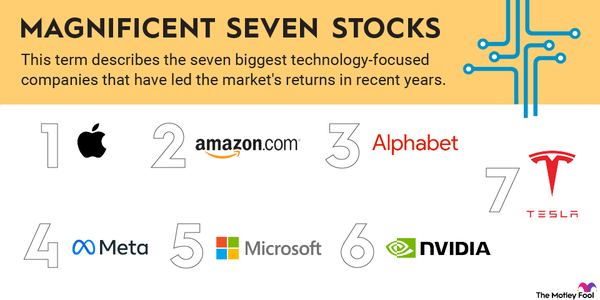Micron Technology (MU -1.02%) is a leader in innovative memory and storage solutions for the technology industry. The company has an extensive portfolio of high-performance products, which it sells under the Micron and Crucial brands. Its products are essential to the digital economy.
The memory and storage company's products support a range of innovative technologies, including 5G and artificial intelligence (AI). The growing adoption of AI is accelerating the company's return to profitability. Micron believes it will be one of the top beneficiaries in the semiconductor industry from a potential AI-powered growth cycle.
Micron Technology's AI-powered acceleration has many people interested in buying its stock. This guide will teach you everything you need to know about Micron Technology and how to add the tech stock to your portfolio.
How to invest
How to buy Micron Technology stock
Anyone can become a shareholder of Micron Technology. The memory and storage solutions company trades on the Nasdaq Stock Exchange under the stock ticker MU, so you can buy the stock in any brokerage account.
Stock
You'll need to take a few steps before becoming a Micron investor. This four-step guide will show you how to invest in stocks and add the technology company to your portfolio.
Step 1: Open a brokerage account
You'll want to open and fund a brokerage account before buying shares of any company. If you need to open one, here are some of the best-rated brokers and trading platforms. Take your time to research the brokers to find the best one for you.
Step 2: Figure out your budget
Before making your first trade, you'll need to determine a budget for how much money you want to invest. You'll then want to figure out how to allocate that money. The Motley Fool's investing philosophy recommends building a diversified portfolio of 25 or more stocks you plan to hold for at least five years.
You don't have to buy all those stocks at once. You can ease into investing by taking one step at a time. A good way to start is with around 10 stocks. So, if you have $1,000 to invest right now, you'd want to budget about $100 for each stock.
Step 3: Do your research
It's essential to thoroughly research a company before buying its shares. You should learn about its competitors, its balance sheet, how it makes money, and other factors to make sure you have a solid grasp on whether the company can grow value for its shareholders over the long term. Continue reading to learn more about some crucial factors to consider before investing in Micron Technology stock.
Step 4: Place an order
Once you've opened and funded a brokerage account, set your investing budget, and researched the stock, it's time to buy shares. The process is relatively straightforward. Go to your brokerage account's order page and fill out all the relevant information, including:
- The number of shares you want to buy or the amount you want to invest to purchase fractional shares.
- The stock ticker (MU for Micron Technology).
- Whether you want to place a limit order or a market order. (The Motley Fool recommends using a market order since it guarantees you buy shares immediately at market price.)
Here's a screenshot of how to buy a stock with the five-star-rated platform Fidelity (which offers a video tutorial and a step-by-step guide):

Once you complete the order page, click to submit your trade and become a Micron Technology shareholder.
Should I invest?
Should I invest in Micron Technology?
There's no one-size-fits-all approach to investing. It's a personal endeavor. You should strive to build a portfolio that aligns with your values, risk tolerance, and return objectives. Not every stock will be right for your situation.
With that in mind, here are some reasons why you might want to invest in Micron Technology:
- You think Micron Technology will be one of the biggest beneficiaries of the AI megatrend.
- You believe AI will continue accelerating revenue and profit growth for Micron.
- Adding Micron would help diversify your portfolio.
- You don't need much dividend income.
- You don't expect the supply challenges that plagued Micron in the past to be a problem in the future.
- You believe Micron can grow into its high valuation.
On the other hand, here's why Micron might not be the right stock for you:
- You don't understand what Micron does or how it makes money.
- You're seeking to invest in consistently profitable companies.
- You want stocks with a higher dividend yield or more consistent dividend increases than Micron.
- You're not sure AI will be a long-term growth driver for the company.
- You already own several other technology stocks in your portfolio.
- You're concerned that a future oversupply of memory and storage products could affect Micron's financial results and weigh heavily on its stock.
- You think Micron Technology trades at an unjustifiably high valuation.
Profitability
Is Micron Technology profitable?
It's vital to research a company's profitability. Earnings tend to drive a stock's performance over the long term. Ideally, investors will want to see that a company is growing its profits or at least on the path toward making money.
Profits had proven elusive to Micron Technology in its 2023 fiscal year. A challenging environment in the memory and storage industry resulted in the company's revenue getting cut in half (from $30.8 billion in fiscal year 2022 to $15.5 billion in fiscal year 2023). As a result, it went from generating $8.7 billion of net income in 2022 to reporting a net loss of $5.8 billion in fiscal 2023.
However, AI demand and tight supply accelerated the company's return to profitability in 2024. In its fiscal second quarter, Micron reported $5.8 billion of revenue (up from $4.7 billion in its fiscal first quarter and $3.7 billion in the year-ago period). That enabled the company to return to profitability. It reported $793 million of net income in the period (up from a net loss of $1.2 billion in its fiscal first quarter and $2.3 billion in the year-ago period).
Micron Technology expects the upward trajectory to continue. "Our preeminent product portfolio positions us well to deliver a strong fiscal second half of 2024," CEO Sanjay Mehrotra said in the company's fiscal second-quarter earnings report. "We believe Micron is one of the biggest beneficiaries in the semiconductor industry of the multiyear opportunity enabled by AI."
Dividends
Does Micron Technology pay a dividend?
Micron Technology has paid dividends to its shareholders since initiating a payout in 2021. As of mid-2024, the company's quarterly rate was $0.115 per share ($0.46 annually). With a share price in the $120s at the time, Micro Technology had a 0.4% dividend yield. The figure was significantly lower than the S&P 500's 1.4% dividend yield. The company had only increased its dividend payment once since initiating it in 2021 (a 15% increase in 2022).
Given its low yield and limited growth track record, Micron Technology likely won't appeal to dividend-focused investors.
ETFs
ETFs with exposure to Micron Technology
Not everyone wants to be an active stock picker and manage a portfolio of individual stocks. Thanks to exchange-traded funds (ETFs), you don't have to be an active investor. These passive investment vehicles allow you to gain some exposure to a company through a thematic approach or broader market strategy.
Exchange-Traded Fund (ETF)
According to ETF.com, 272 ETFs held 181.5 million shares of Micron Technology in mid-2024. The Vanguard Total Stock Market ETF (VTI 0.77%) held the most shares at 34.5 million. However, it had a small allocation to the technology company at 0.2% of its assets, so there are better ways to gain passive exposure to Micron Technology.
Investors seeking greater exposure to Micron Technology could consider the following tech ETFs:
- Invesco Semiconductors ETF (PSI -1.18%): The ETF focused on semiconductor stocks had 31 holdings in mid-2024. Micron Technology was its largest holding at 6.8% of the fund's value. The fund had a 0.57% total ETF expense ratio.
- First Trust Nasdaq Semiconductor ETF (FTXL -0.51%): This ETF focuses on semiconductor stocks listed on the Nasdaq Stock Exchange. It had 31 holdings in mid-2024, including Micron Technology (the sixth-largest at 4.3% of its net assets). The ETF had a 0.6% expense ratio.
Related investing topics
Stock splits
Will Micron Technology stock split?
Micron Technology didn't have an upcoming stock split as of mid-2024. The memory company has split its stock three times in its history:
| Date |
Stock Split Type |
|---|---|
| May 2000 | 2-for-1 |
| May 1995 | 2-for-1 |
| April 1994 | 2-for-1 |
The company last split its stock more than two decades ago. At the time, Micron Technology's stock price was about $130. The company's stock was almost at that level in mid-2024, so Micron Technology could split its stock again.
The bottom line on Micron Technology
Micron Technology is a leader in memory and storage products. Its portfolio puts it in a strong position to capitalize on the AI megatrend. It could drive accelerating revenue and earnings growth in the coming years, making it one of the best growth tech stocks to watch.
FAQ
Investing in Micron Technology FAQ
Is Micron Tech a good stock to buy?
Micron Technology could be a good stock to buy. The company has a strong portfolio of memory and storage products, which are crucial to innovative technology like 5G and AI. The company believes it will be one of the biggest beneficiaries of the multiyear growth opportunity for AI. The trend could drive its earnings and stock price a lot higher in the coming years.
However, the company traded at a very high valuation in mid-2024, at almost 170 times forward earnings. That was several times higher than the Nasdaq (26 times forward PE) and the S&P 500 (less than 21 times forward PE). While the company could grow into its lofty valuation, everything would have to go according to plan. More value-conscious investors might want to watch the stock to see if its valuation comes down before buying shares.
What is the future of Micron stock?
It's impossible to accurately predict the future of any stock. Still, Micron has a lot going for it, which could drive its shares higher in the future. In mid-2024, the company was enjoying an accelerated return to profitability powered by AI demand and tight supply conditions. It believed it would be one of the biggest beneficiaries of the AI boom in the semiconductor industry, which it expected would drive growth for several years.
However, the company also traded at a high valuation and operates in the memory and storage industries, which can be challenging. While Micron appears to have a bright future (which would be a boon for its stock), there's no guarantee its stock will be a winner in the future.
Who are the top investors in Micron?
The top Micron investors in mid-2024 were large asset managers. The Vanguard Group was Micron's top investor, owning 96.2 million shares (8.7% of its outstanding shares) worth more than $11.3 billion. BlackRock (NYSE: BLK) and State Street (NYSE: STT) rounded out the top three at 55.7 million (5%) and 45.5 million (4.1%), respectively. These companies owned shares in the mutual funds and ETFs they managed on behalf of their clients.
What is the ticker for Micron Technology?
Micron Technology trades on the Nasdaq Stock Exchange under the stock ticker MU.




















































































































































































































































